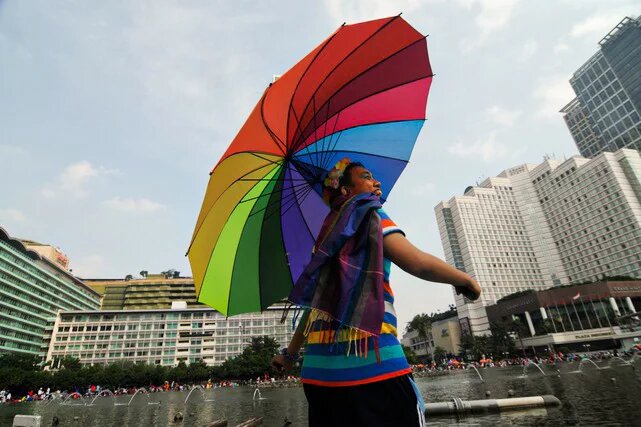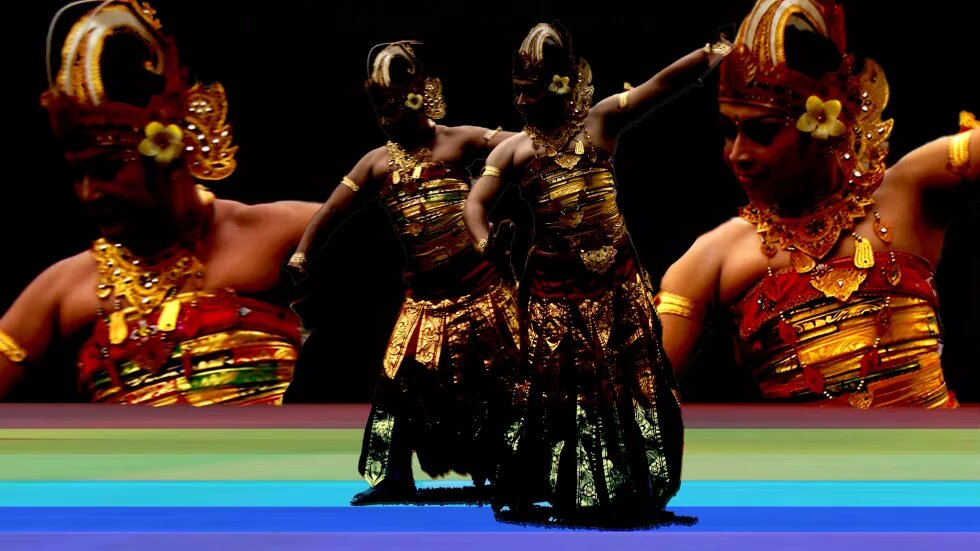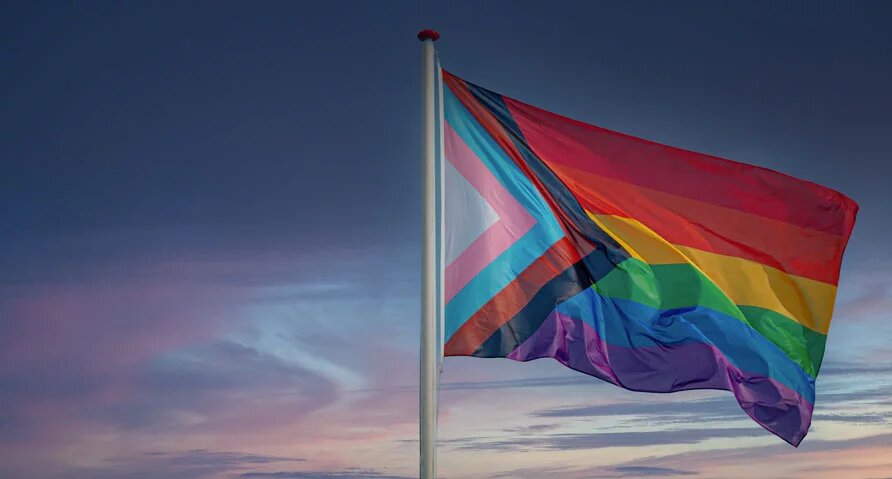
On the occasion of International Day Against Homophobia, Biphobia, Intersexphobia and Transphobia (IDAHOBIT), the scholar-activist Dédé Oetomo from Indonesia explores the contrast between contemporary homophobia and transphobia and the more tolerant or accepting past and how this can give support to the LGBTIQ+ community.

(Re?)-discovering My Ancestral Past
When I came out at the turn of 1979 to 1980, I was a graduate student at Cornell University, where I was gobbling up just about every book in the HQ76 shelf at Olin Library, which contained volumes on homosexuality and related topics, but also on the gay liberation movement, in which gay students at Cornell joined in 1968 through the Student Homophile League, later renamed Cornell Gay Liberation, and further renamed Gay People at Cornell by the time I joined.
But Olin Library also housed the world-famous Echols Collection on Southeast Asia. It was the Winter Intersession at the time, and I got an assignment from Audrey Kahin and Benedict Anderson, editors of Indonesia journal, to compile a bibliography of Indonesian literature in English translation.
It was an easy task, which just needed to be carried out, so in between taking down titles of poems, short stories, novels, plays and anthologies on index cards, I would sometimes digress and read or photocopy articles on homosexualities and gender variance mentioned in historical and ethnographic writings on Indonesia and other societies in Southeast Asia.
I remember one of the articles that opened my eyes and mind about the rich diversity in sexualities and genders in the region was one by Justus M. van der Kroef, "Transvestism and the Religious Hermaphrodite in Indonesia" (University of Manila Journal of East Asiatic Studies 3 [1954]: 257-265).
Now I grew up knowing about transgender women (wandu in Javanese, waria in Indonesian) in East Javanese society, both in the community and on the ludruk folk theater stage, where female roles were played by men or wandu, but van der Kroef’s article revealed other practices and rituals involving transgender and gender variant people like the bissu medium priest/ess in South Sulawesi’s Bugis culture and other similar ritual specialists among the Toraja, in a different area of South Sulawesi, and among some Dayak groups in Kalimantan.
In those digressions from my assignment, I also discovered references to the state annals of the Majapahit Empire (1293-1520), the Pararaton and Nagarakṛtāgama, about its greatest king, Hayam Wuruk (1350-1389) dancing in female clothing in front of his ministers, and having a female name, Pager Antimun.
Around the same time, knowing about my coming out and curiosity, my professor, Benedict Anderson shared his files on Indonesia’s homosexualities and gender variance: photocopies of articles and excerpts from books and classical manuscripts, index cards and notes. Some of the materials reminded me of the institutionalized homosexual relations of adult men and pubescent boys (warok-gemblakan) in Ponorogo, southwestern East Java, embedded in the reyog dance-drama performance, which I read about as a child in popular magazines. I learned about homoerotic poetry chanted to accompany the all-male seudati dance in Aceh, and about the noble ulëebalang on the East Coast keeping pubescent boys from among Minang and Nias slaves, which Snouck Hurgronje mentions in his The Achehnese, and about a couple of queer episodes in the 18th century Javanese classic encyclopedia, Serat Centhini.
When I started writing pieces in Indonesia’s mass media, basically arguing with general society about the tolerance or acceptance of homosexuality and gender variance in Indonesia’s past, which was also still found in contemporary society, perhaps less openly, I used the examples I gathered from my readings to make my point. I tended to combine them with points from gay liberation, since I immediately realized that while the tolerant or accepting past is useful, contemporary gay men, lesbians and transgender people cannot relive the past manifestations of homosexualities or gender variance.
As I went deeper into LGBTIQ+ activism, often inseparable from activism around HIV, I got to know other activists and scholars, from whom I learned more about similar phenomena in the Philippines (traditional shamans and healers), Melanesia (ritual homosexuality based on semen culture [a term I learned from the anthropologist, Carol Jenkins]), as well as same-gender sexual practices around Islamic boarding school education (Java and Madura), around visits to holy graves (Bangladesh), and many others.
Homophobia and Transphobia in Contemporary Societies
In contrast to such rich, tolerated or accepted homosexualities and gender variance in the past, one finds that the conservative segments of contemporary Asian societies, including most governments, express and practice outright rejection and condemnation.
They construct homosexualities and gender variance as imports from the West. Interestingly, the basis for this construction, in Indonesia, is what is called adat Ketimuran (Eastern customs). These are the nineteenth-century convergence of Victorian/Wilhelminian morality and the dismayed realization among the Indonesian elites that their decadent past, which they viewed as inferior to Western morality, is what made them lose to the encroaching Dutch colonizers. I learned about this from Benedict Anderson and the Indonesian historian, Ong Hok Ham.
Among Muslim communities, the teachings of Islam have been presented as ground for what can be called heterosexism and cisgenderism, to put it mildly, or increasingly outright homophobia and transphobia. In modernist circles, the Orientalist portrayal of tolerated or accepted homosexualities and gender variance in Muslim communities was seen as embarrassing. Hence, in combination with more restrictive and violent interpretations of doctrines on gender and sexuality, contemporary Muslims feel that they need to show their objection to homosexualities and gender variance more or less in the same way as Western societies of the time.
In Bali, homosexualities and gender variance are often said to be unacceptable as they are against the tight-knit (read: heteronormative, gender-binary) social fabric, which in the Hindu-majority society of the island is part of religion anyway.
In Thailand, as put forth by Coeli Barry at her keynote at a memorial seminar for Benedict Anderson in Yogyakarta in 2017, with regard to the relatively milder heterosexism and cisgenderism, if not homo- and transphobia, the moral conservatism is conflated with modernity. This can be seen from the objection to the proposed marriage equality legislation, which might take different degrees of legal guarantees for same-gender couples or transgender and cisgender ones, among the Thai polity.
In both Bali and Thailand, commercial sex-related venues give the false impression that homosexualities and gender variance are tolerated, if not accepted. But one must remember that these are for visiting tourists. Conditions can be totally different for local citizens.
How, then, can we explain the contrast between contemporary homophobia and transphobia and the more tolerant or accepting past? Before we do that, we need to consider some accounts from the first encounter of European explorers and would be colonizers with Asian peoples.
Again, I refer to what I learned in my early years exploring homosexualities and gender variance in the 1980s. I learned from my senior and mentor, Adi Sukadana, a self-taught anthropologist and student of sexualities and genders, at Universitas Airlangga, where I have taught for most of my academic career, that he discovered in the libraries and archives of seminaries in Flores, East Nusa Tenggara, diaries and correspondences of early Portuguese missionaries, who were shocked at what they saw as the “licentious” sexual and gender practices of the locals, whom they felt they had to “save” into the fold of Christ. Later I learned of similar materials written by Spanish missionaries based on their encounters with local populations in the Philippines.
And until this day, the penal codes of former British colonies still contain Sections (Articles) 375 (Sri Lanka), 377 (most of the others) and 377A (Singapore), which criminalize “carnal intercourse against the order of nature.” The articles are popularly known as the sodomy articles, incorporated verbatim from the then British Penal Code. Current exceptions in Asia include Hong Kong and India, where Section 377 has been repealed or invalidated. In many ways it is almost incomprehensible how the governments of these Asian former colonies defend the legal provision as if it was part of Asian “cultures.”
Conclusions, and the Way Forward
The irony of the contrast is that when homosexualities and gender variance have been mainstreamed or normalized in the cultures and laws of Western societies, in many ways thanks to gay liberation and other related movements, the homophobia and transphobia that Asian societies inherited from the West have been internalized and incorporated as part of Asian cultures and laws.
As I mentioned earlier in reference to my combined approach of revealing the tolerant and accepting expressions and practices in our ancestral past, which can sometimes still be seen in our contemporary societies, and adopting the gay liberation approach, current LGBTIQ+ people and communities can recall the past, but must live in the present.
This is where no matter what, people and communities of non-normative genders and sexualities will need to have the courage to build a safe and enabling environment. In more or less democratic societies, the cry of “LGBTIQ+ rights are human rights” resonate among the young and not-so-young alike. This is where campaigns like the International Day Against Homophobia, Transphobia and Biphobia on whose occasion I am writing this essay, are important.
This year’s theme is “Together: Resisting, Supporting, Healing!” The LGBTIQ+ movements in Asia can together resist homophobia and transphobia by unpacking them as imports from the West, so that we can support one another in the struggle to ensure human rights in building our communities, and perhaps, learning from our ancestral shamans, medium priest/esses and other ritual specialists, heal one another from the hurt that the phobias have inflicted on many, if not most, of us as we grow up.
__
Dédé Oetomo is a scholar-activist at GAYa NUSANTARA Foundation & APCOM Foundation, and Universitas Airlangga in Indonesia.




